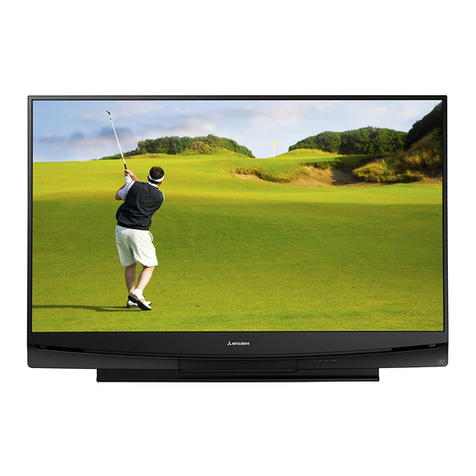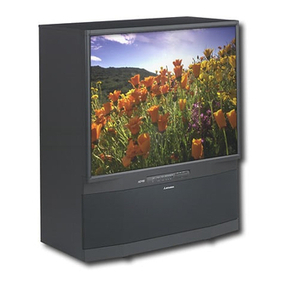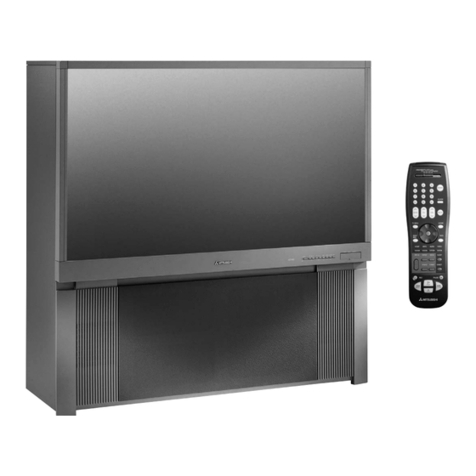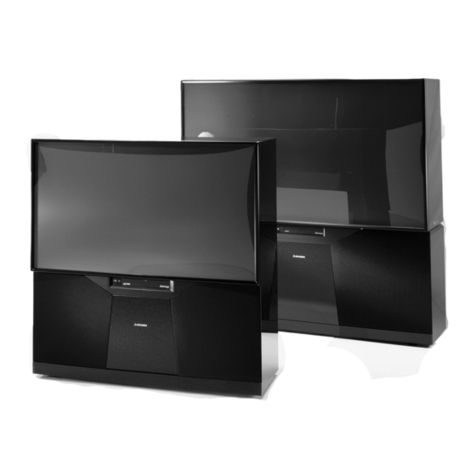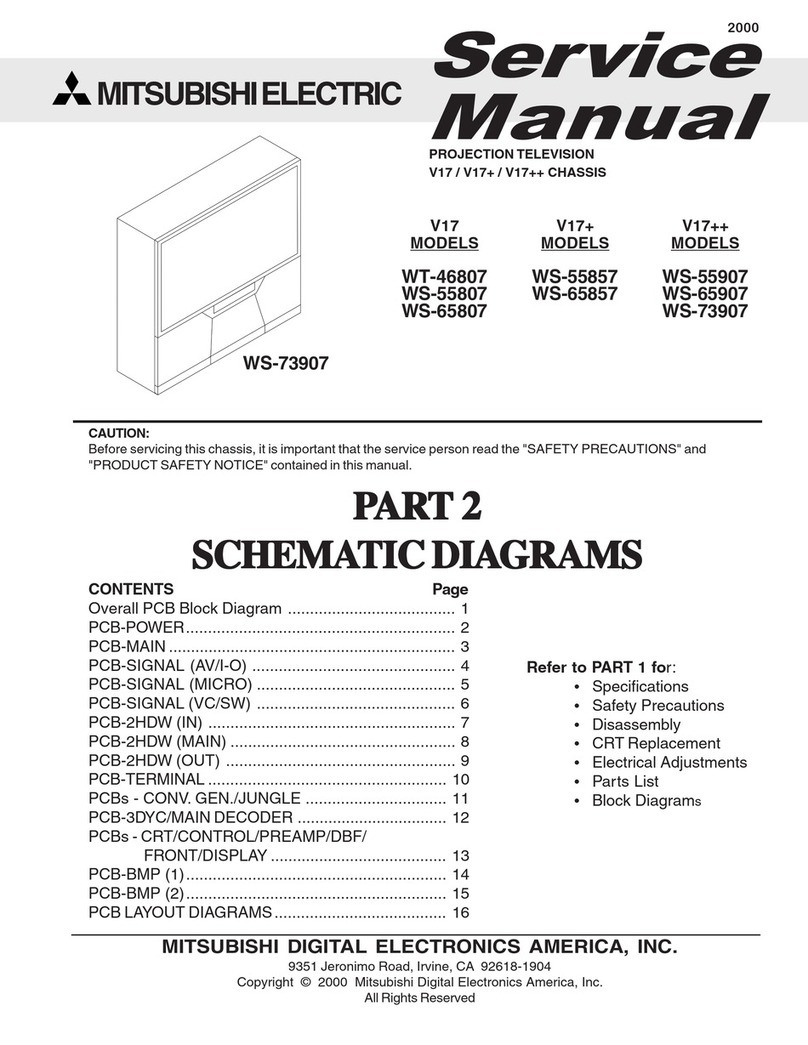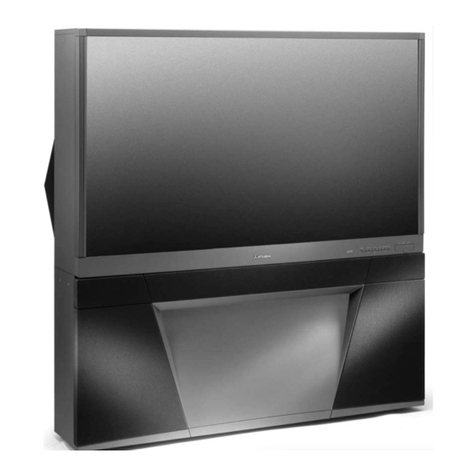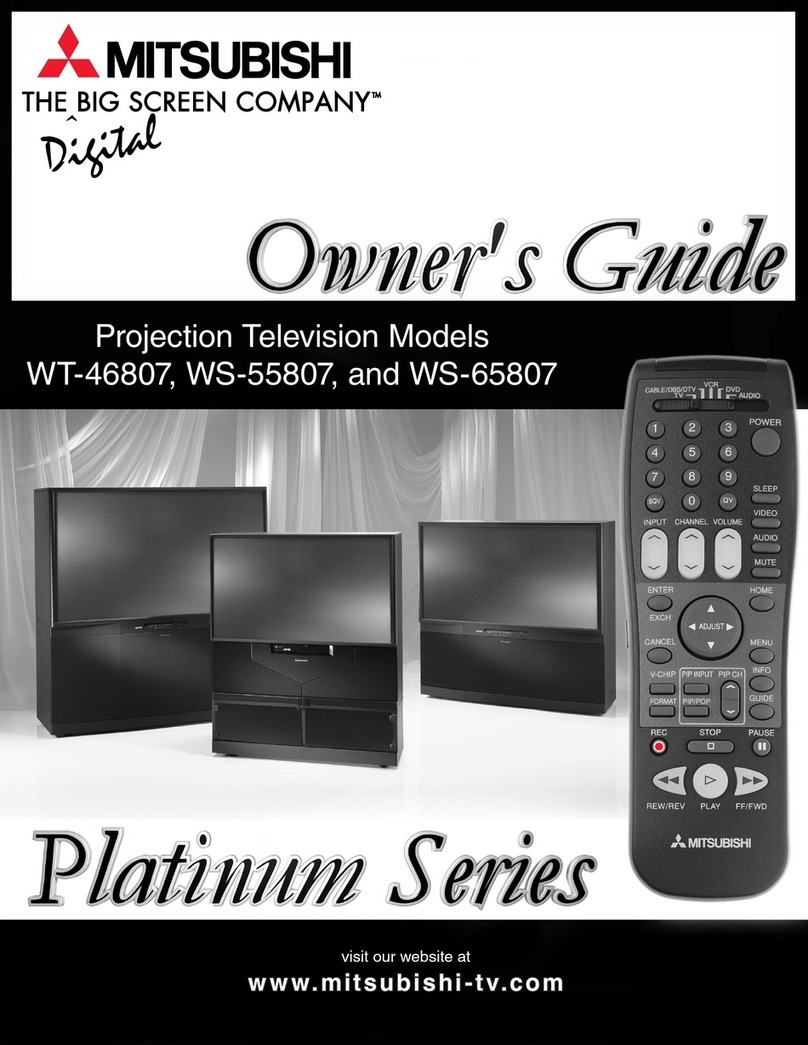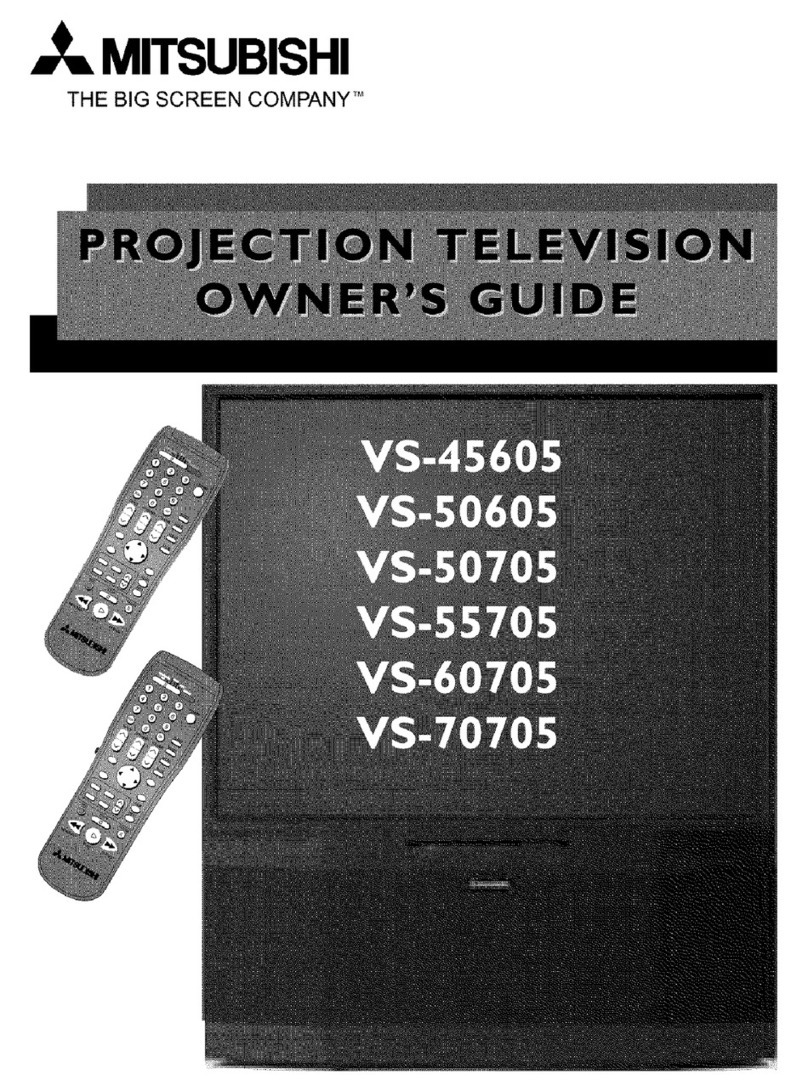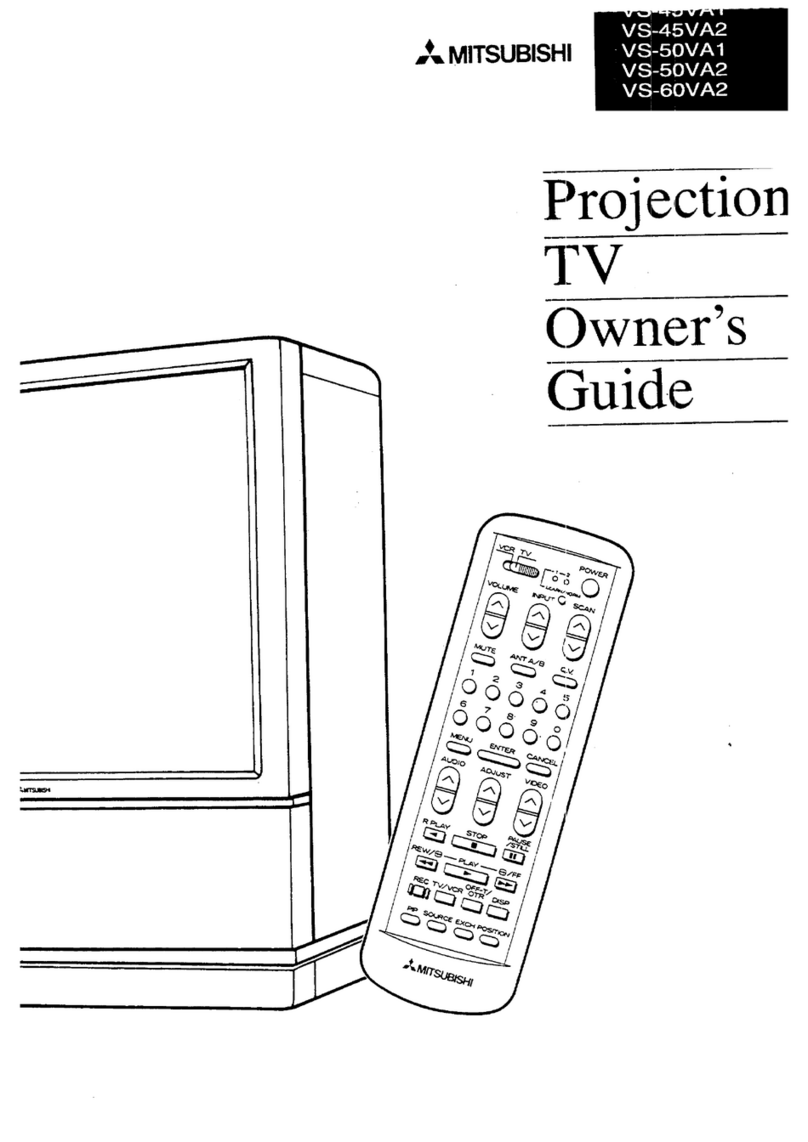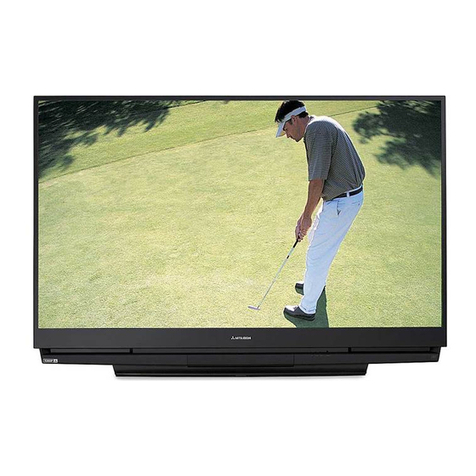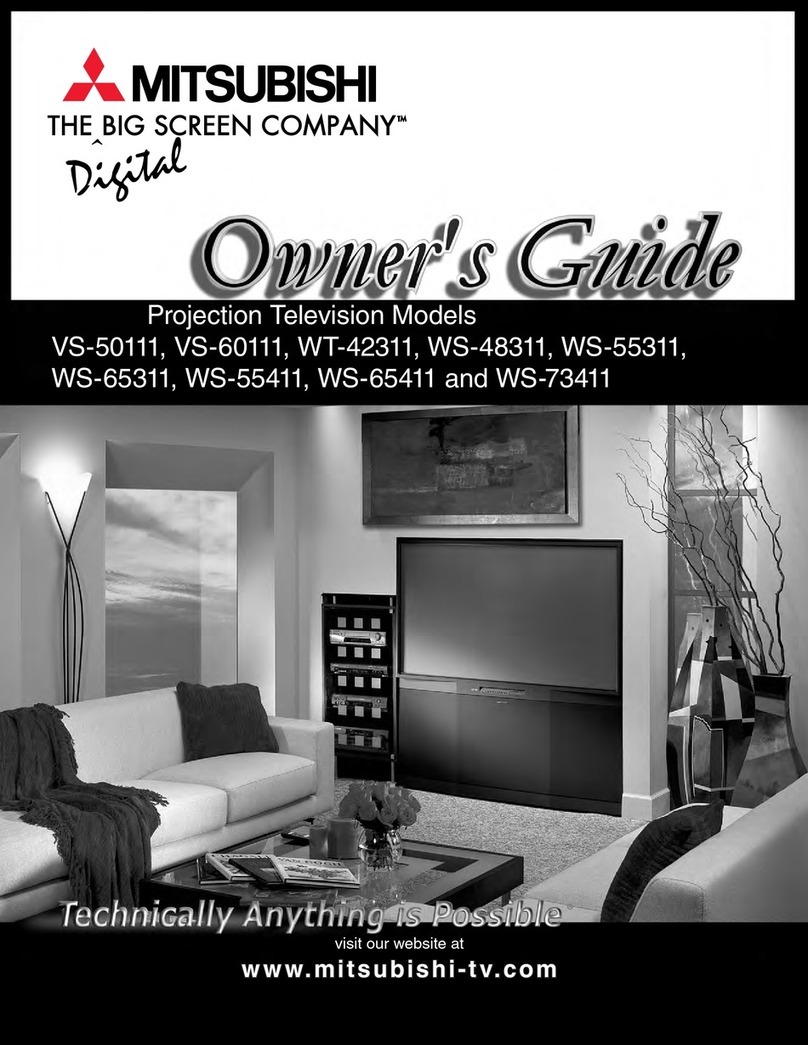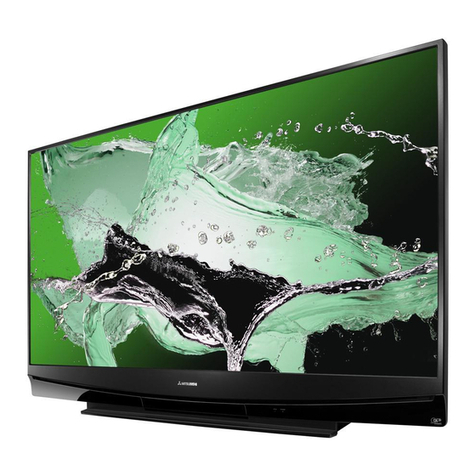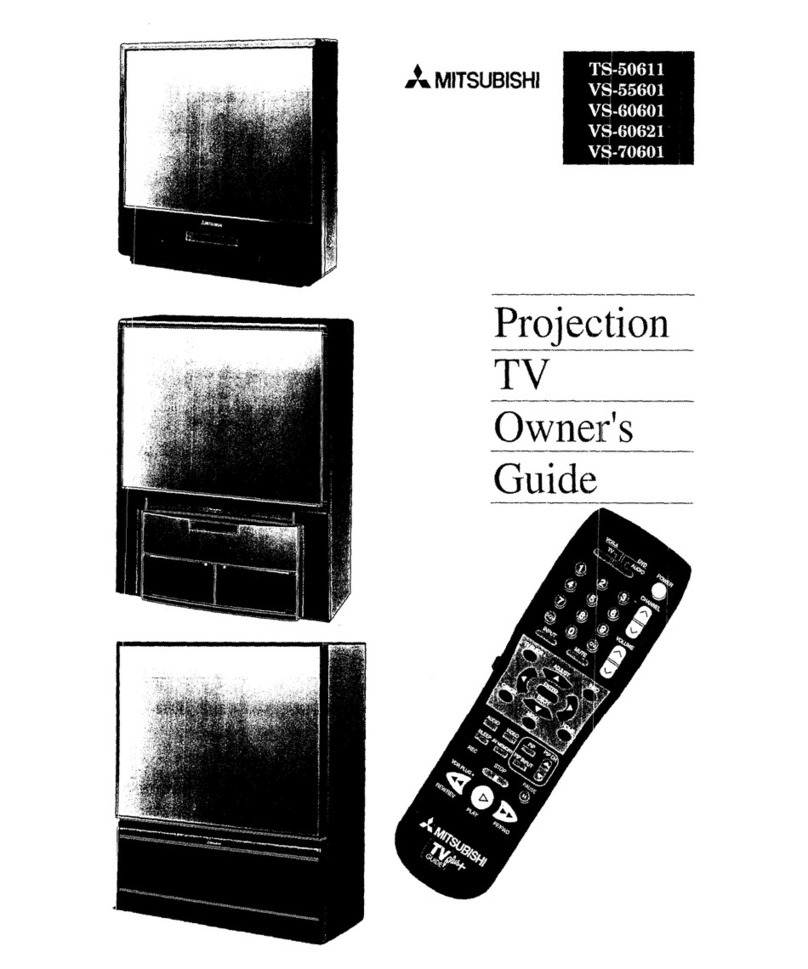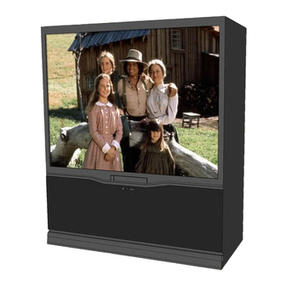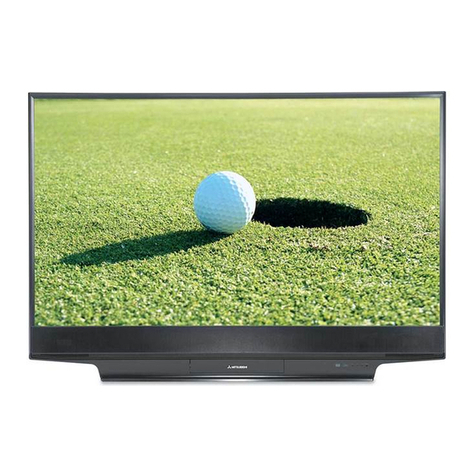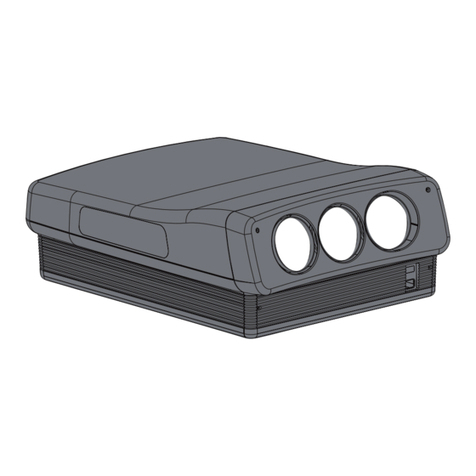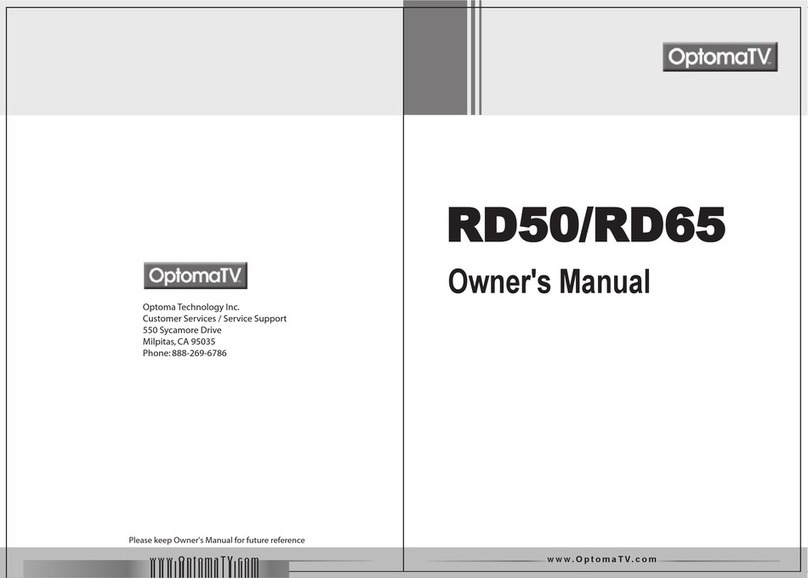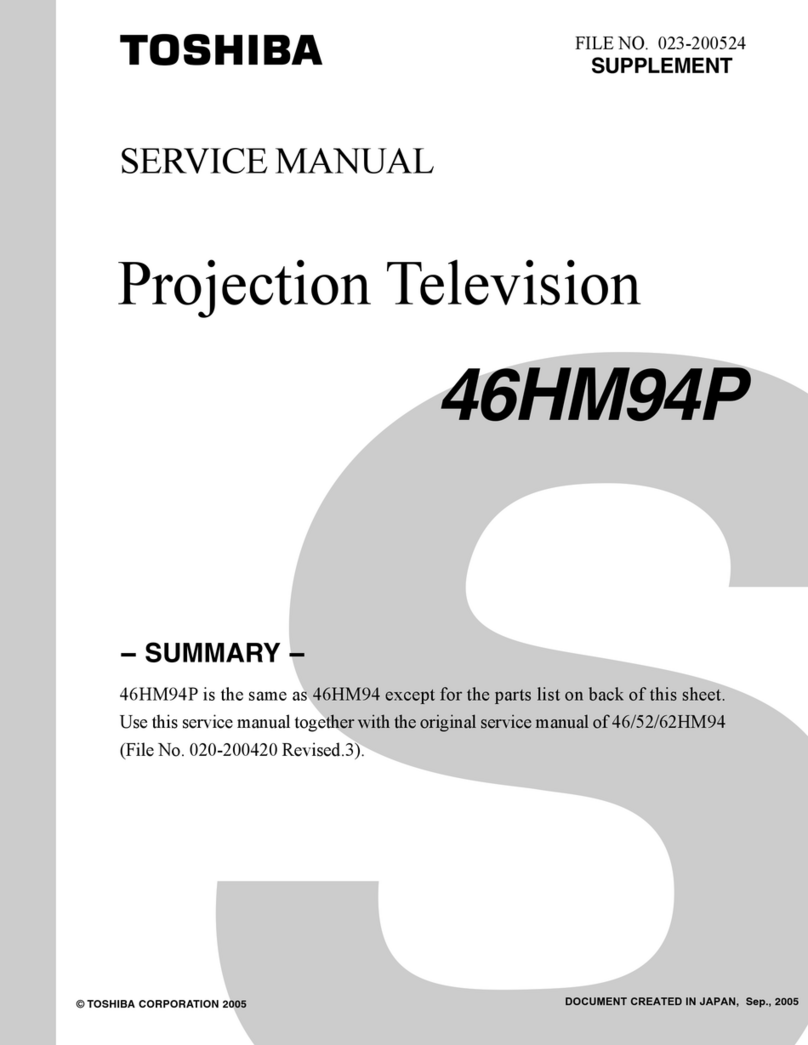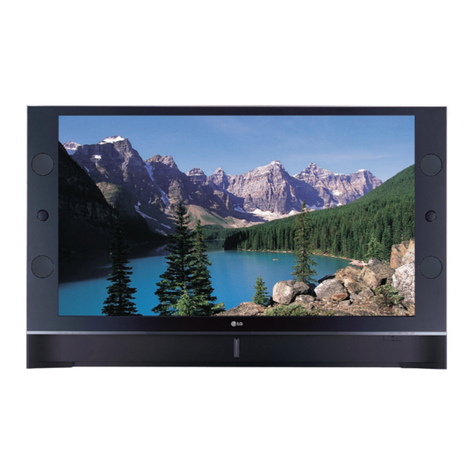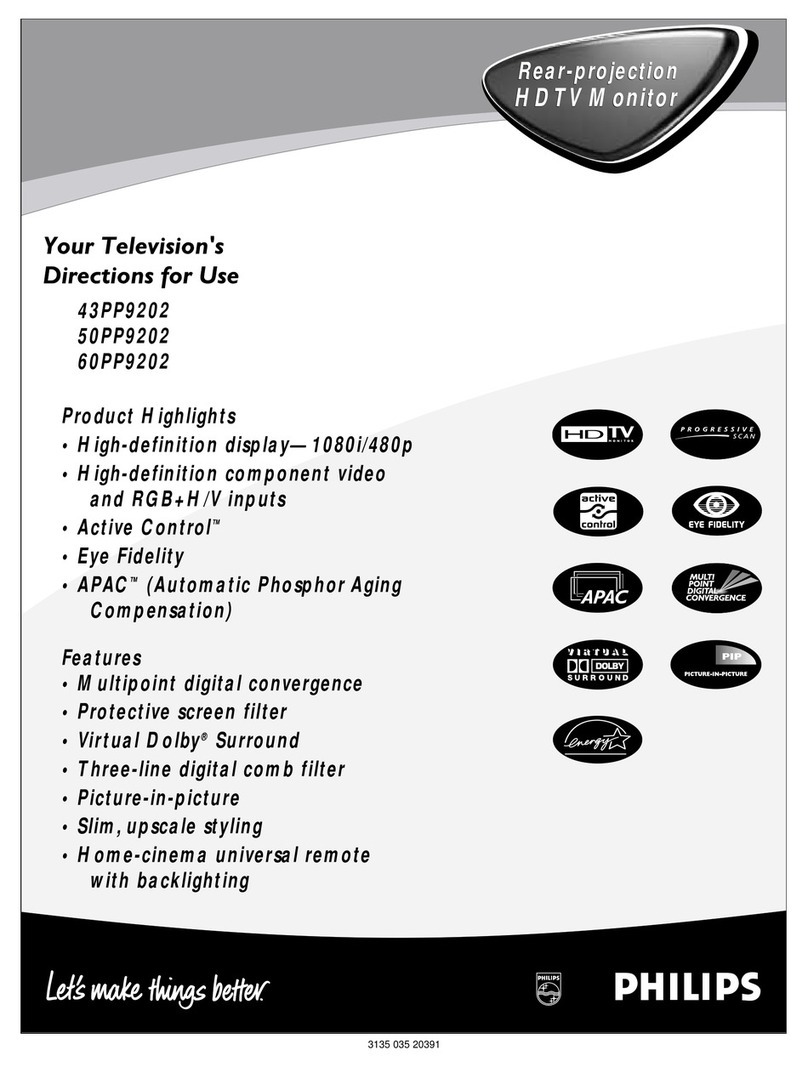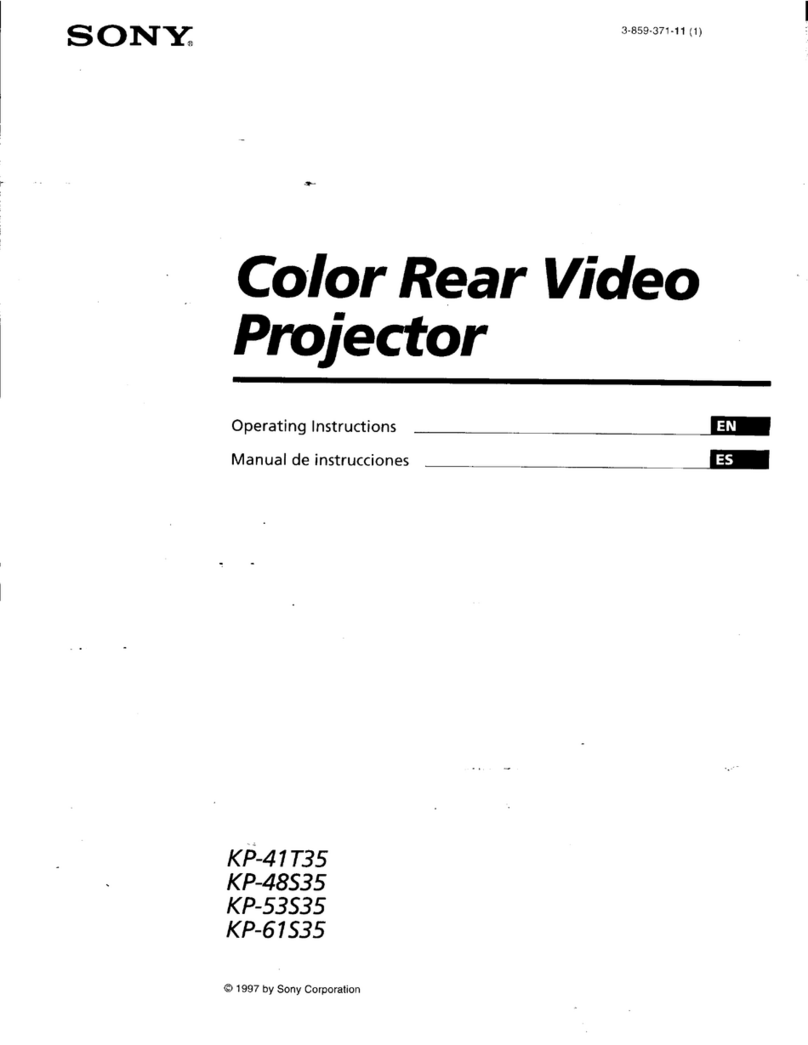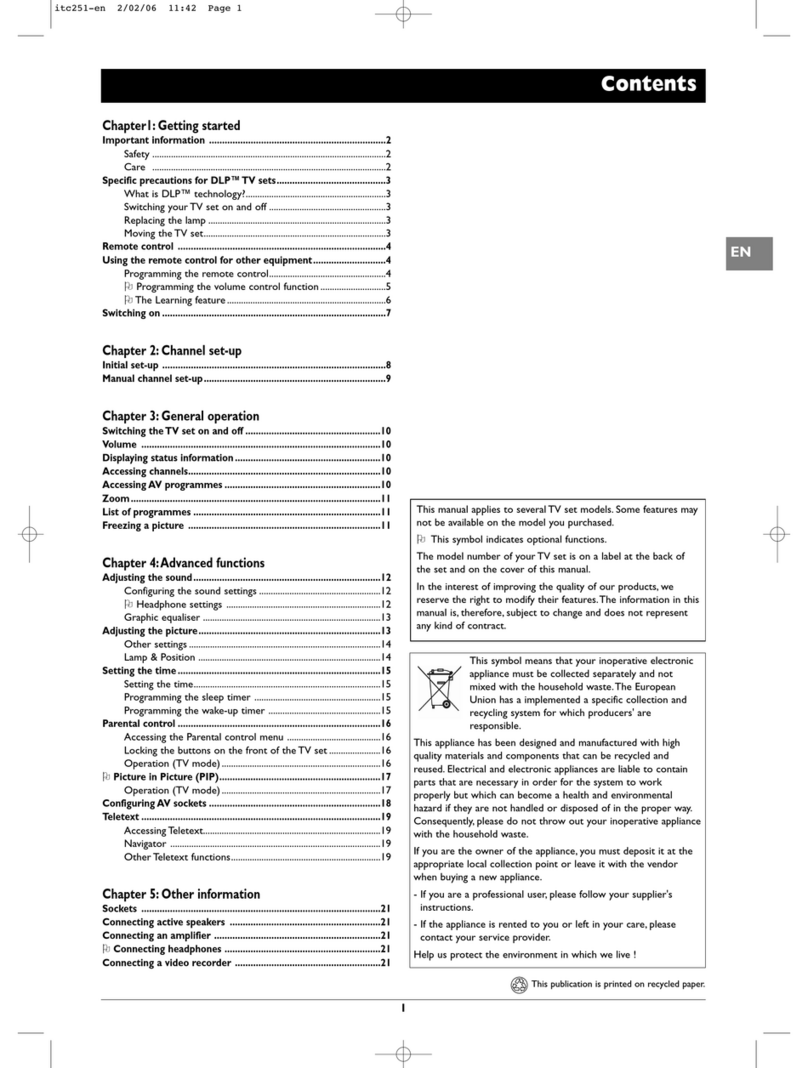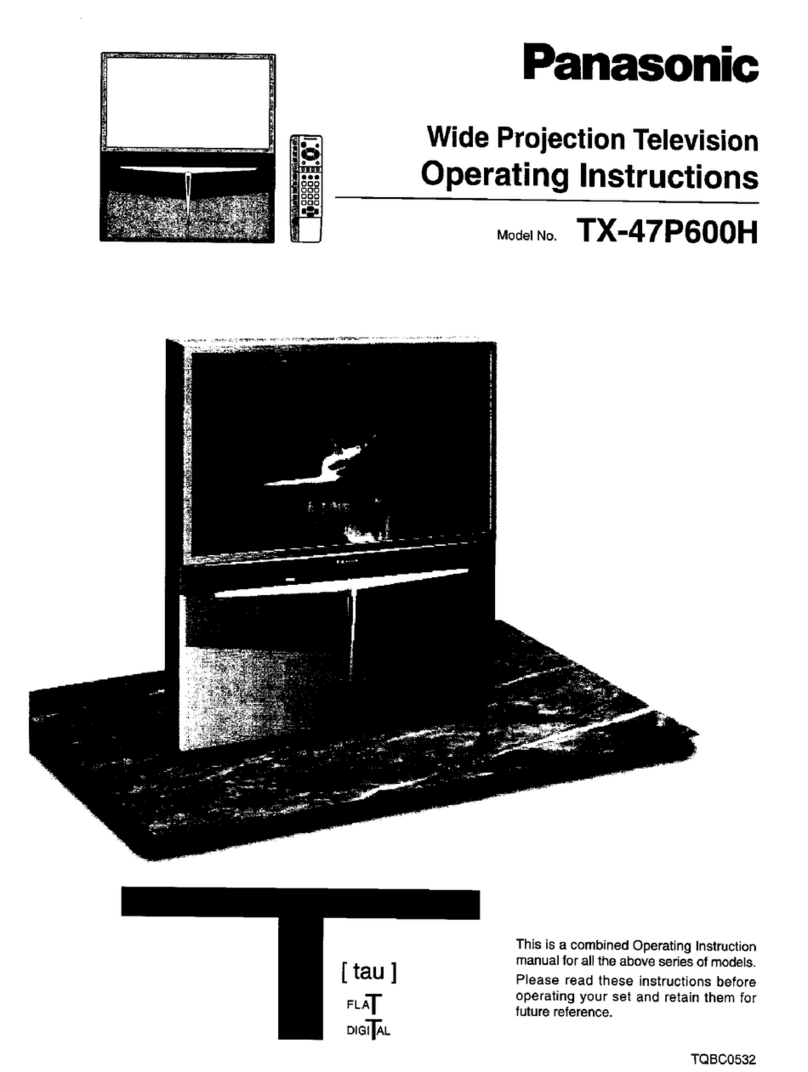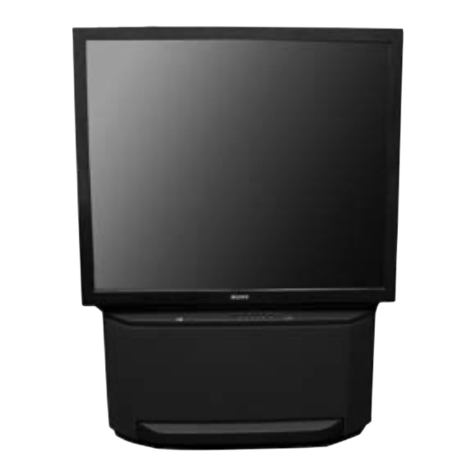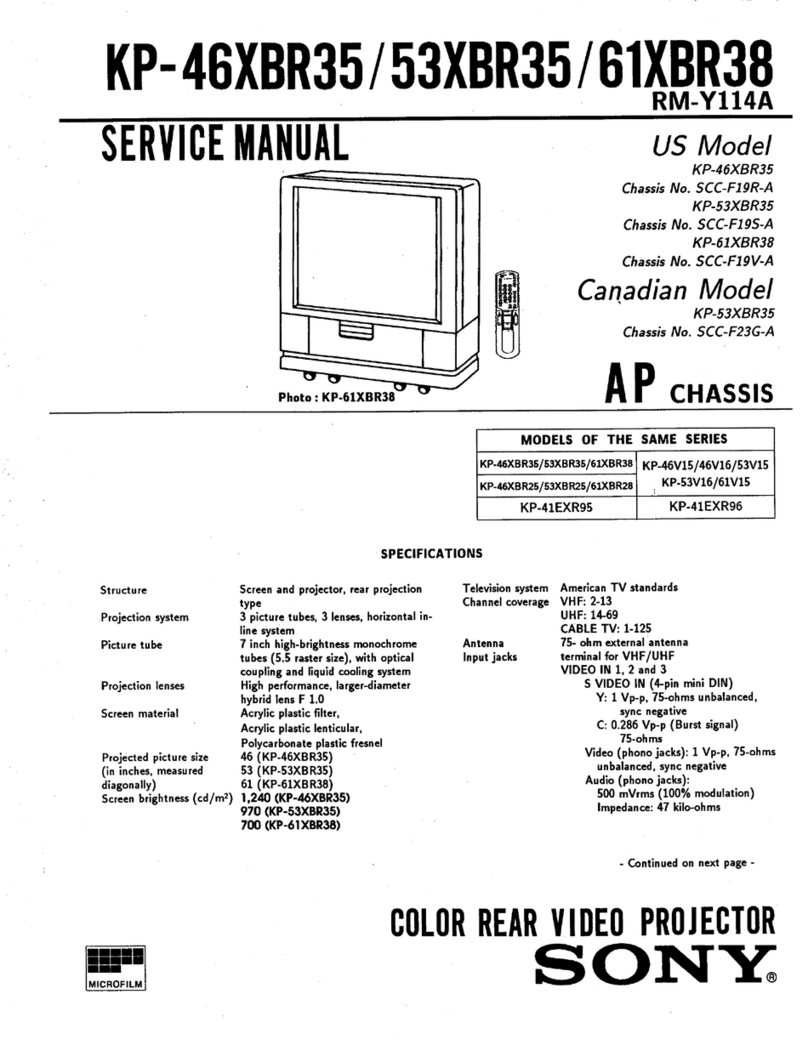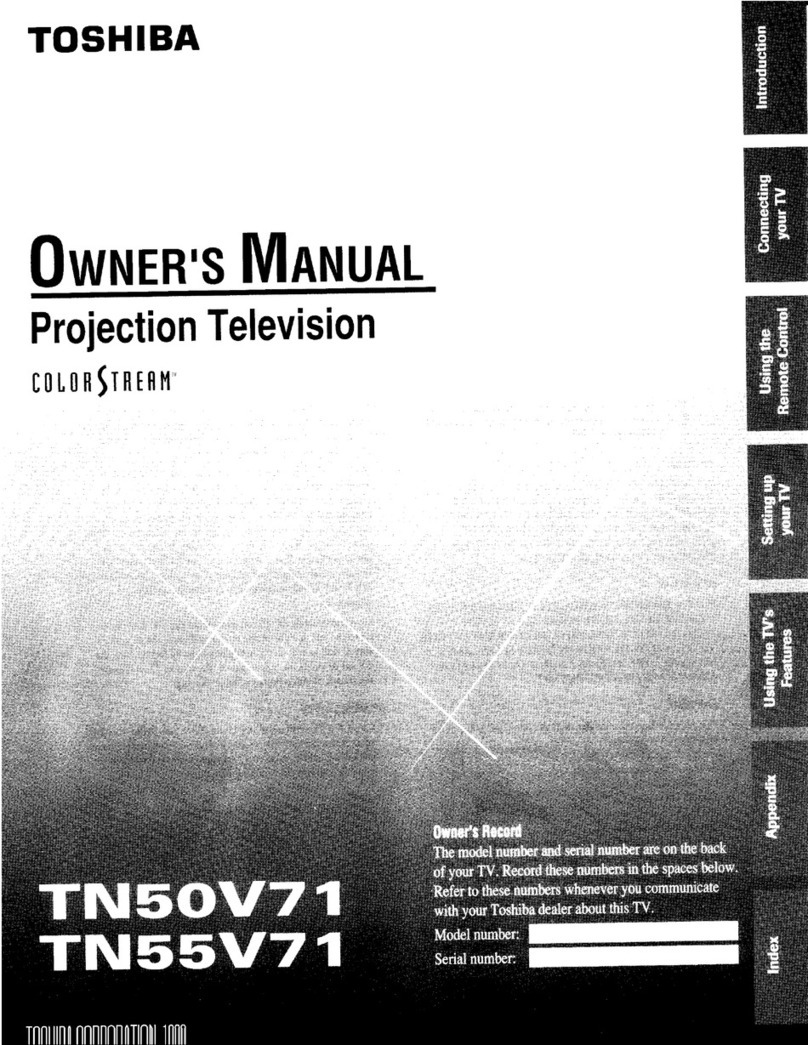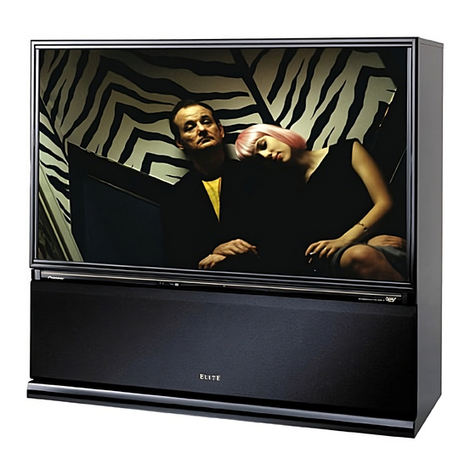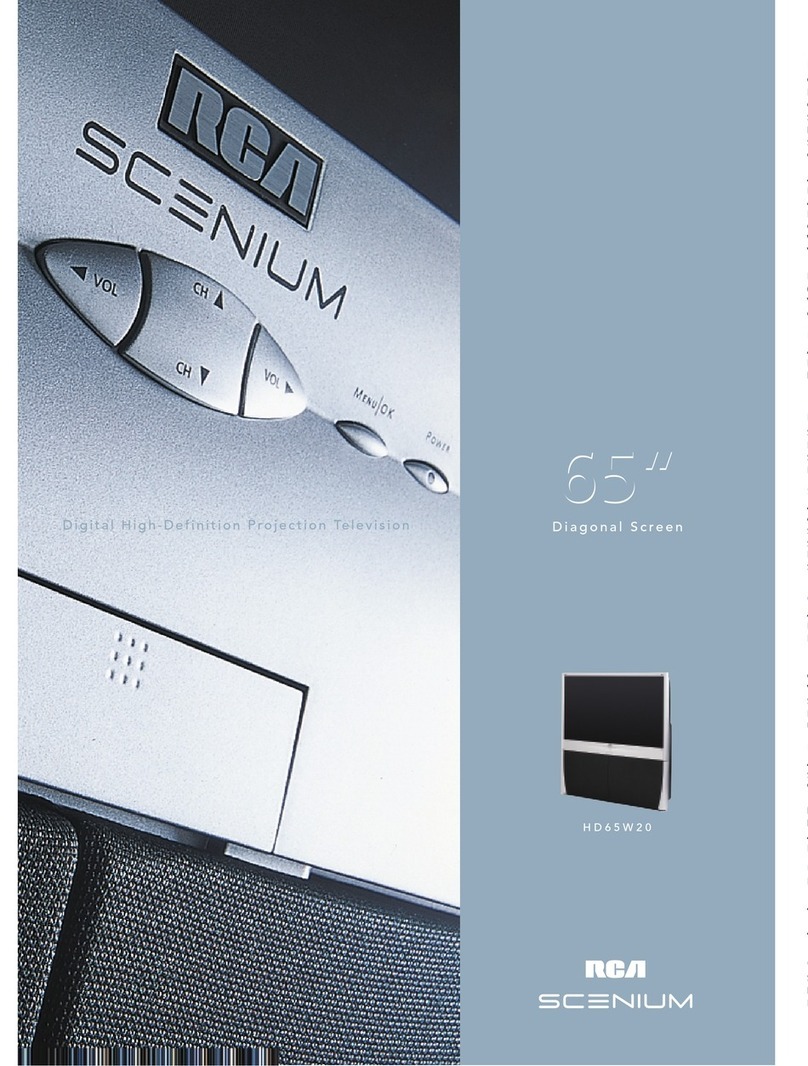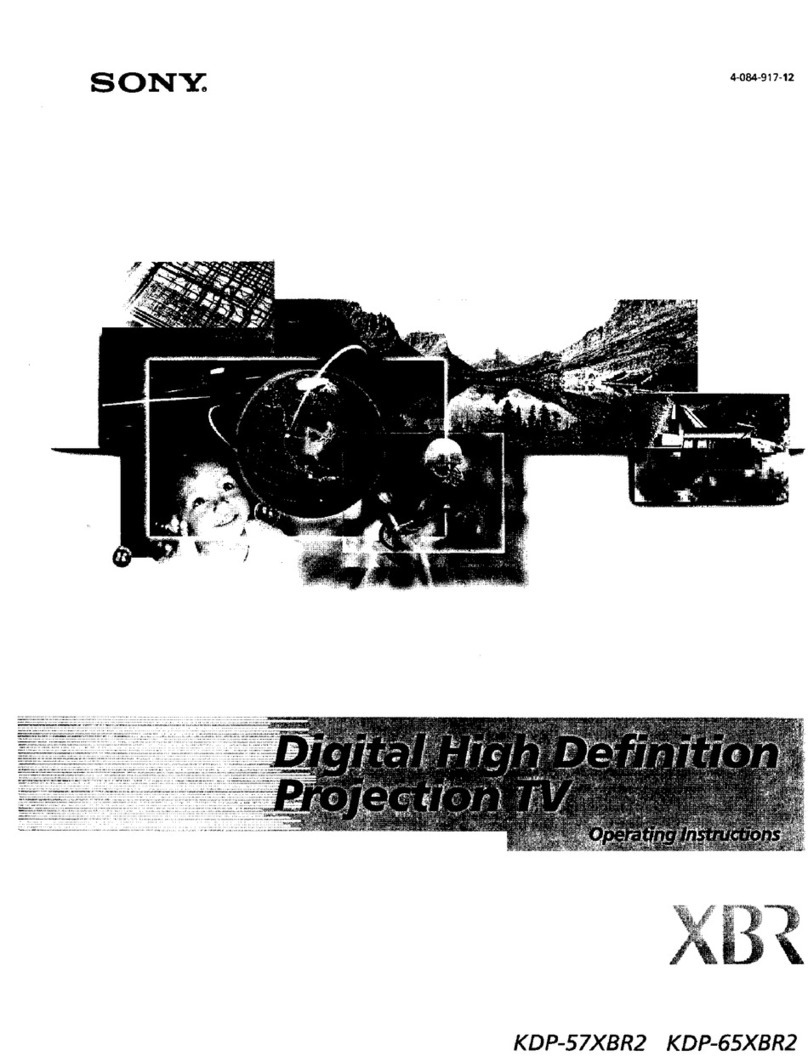Important Safeguards (cont.)
14. Power Lines
An outside antenna system should not be located
in the vicinity of overhead power lines or other
electric light or power circuits, or where it can fall
into such power lines or circuits. When installing
an outside antenna system, extreme care should
be taken to keep from touching such power lines
or circuits as contact with them might be fatal.
15. Overloading
Do not overload wall outlets and extension cords
as this can result in a risk of fire or electric shock.
16. Object and Liquid Entry
Never push objects of any kind into this TV
receiver through openings as they may touch
dangerous voltage points or short-out parts that
could result in a fire or electric shock. Newer spill
liquid of any kind on the TV receiver.
17. Outdoor Antenna Grounding
If an outside antenna or cable system is connected
to the TV receiver, be sure the antenna or cable
system is grounded so as to provide some protec-
tion against voltage surges and built-up static
charges.
Section 810 of the National Electrical Code, ANSI/
NFPA No. 70-1984, provides information with
respect to proper grounding of the mast and
supporting structure, grounding of the lead in
wire to an antenna discharge unit, size of
grounding conductors, location of antenna dis-
charge unit, connection to grounding electrodes,
and requirements for the grounding electrode.
EXAMPLE OF ANTENNA GROUNDING
-_'_ANTENNA
'_k I LEAD IN WIRE
._'_OUND CLAM P'__ ANTENN A
________________/ -""_:1_ _DISOHARGE UNIT
I(NEC SECTION 810-20)
IEQUIPMENT-_ I_ /_JGROUNDING
_"---.,__ CONDUCTORS
__"'_'POWER SERVICE GROUNDING
ELECTRODE SYSTEM
NEC -- NATIONAL ELECTRICAL CODE (NEC ART 250, PART H)
18. Servicing
Do riot attempt to service thi,; TV receiver
yourself as opening or removing covers may
expose you to dangerous voltage or other
hazards. Refer all servicing to qualified service
personnel.
].9. Damage Requiring Service
Unplug this TV receiver from the wall outlet
and refer se]-vicing to qualified service
personnel under the following conditions:
(a) When the power-supply cord or plug is
damaged.
(b) ]fliquid has been spilled, or Objects have
{_llen into the TV receivel:.
(c) If the TV receiver has been exposed to rain
or water.
(d) ]f the TV receiver does not operate normally
by following the operating instructions.
Adjust only those controls that are covered
by the olcerating instructions as an improper
adjustment of other controls may result in
damage and will often require extensive
work by a c ualified techn:[cian to restore the
TV receiver to its normal operation.
(e) ]f the TV receiver has been dropped or the
cabinet has been damaged.
(f) When the _[_7receiver exhibits a distinct
change in performance -- this indicates a
need for se]wice.
20. Replacement Parts
When replacement parts are required, be sure
the service tec]mician has used replacement
parts specified by the manufacturer or have the
same characte:dstics as the original part.
Unauthorized :substitutions may result in fire,
electric shock or other hazards.
21. Safety Check
Upon completion of any service or repairs to this
TV receiver, ask the service technician to
perform safety checks to determine that the TV
receiver is in safe operating condition.
l, Warning:
Do not leave stationary images, such as stock
market reports, video games, station logos, or
the TV's displays, on-screen tbr more than 10
minutes. Still patterns such as these can scar
the :picture tuhe, causing permanent damage to
the TV.




















